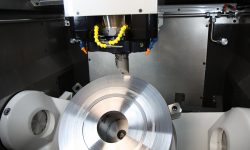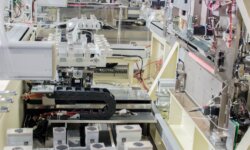As with most manufacturers, you are likely on the lookout for ways to save money, but doing so is often easier said than done. Firms typically take advantage of the most obvious ways to cut costs early on, and struggle to find more subtle chances for saving. If you manage to continue lowering costs over the long haul, however, you will gain a clear advantage over your competitors, increasing your odds for success. To find such savings and bolster your business, look to:
Furnace Features
In most factories, furnaces are among the largest users of energy. This means that if you can make yours even marginally more efficient, you will dramatically reduce the amount of money you have to spend on energy. To do this, try:
- Heat Recovery– Furnaces lose much of their energy to waste heat, but modern technology makes it possible to recapture some of that waste and put it back into the furnace.
- Speed Up the Loading Process– Inspect your method for loading the furnace and see if there is any way to speed it up. The faster you load, the less time you will have to keep the door open, reducing the amount of heat that escapes.
- Simple Maintenance– Regularly inspecting, repairing, and upgrading your furnace allows you to catch equipment issues early. This lets you shore up problems that reduce energy efficiency before they get out of hand.
Besides cutting energy costs in the short term, furnace improvements will also make your business more environmentally sustainable. This may qualify you for tax credits and other financial incentives that encourage energy efficiency.
Motor Maintenance
Besides your furnace, you’re likely spending large amounts of energy on fans, belts, and other devices driven by motors. A few simple changes will reduce this energy use substantially. One such change is to set each motor to operate at variable speeds, and then find the slowest speed possible that still gets the job done. This prevents you from using more energy than is absolutely necessary. Likewise, you can install a timer or a motion sensor to turn each motor off automatically when it isn’t needed. This prevents you from leaving motors on by accident and wasting energy as a result.
Color Powder Prudence
If you use paint to color your products, consider switching to color powder. Powder is suitable for many of the same items, but has a variety of cost benefits, including:
- Improved Efficiency– Roughly 65 percent of paint evaporates on the production line, whereas almost 100 percent of powder ends up on your products. This means you won’t have to buy as much powder for the same amount of coloring.
- Reduced Pollution– Unlike paint, powder does not contain volatile organic compounds, meaning you won’t have to spend as much money cleaning up pollutants.
- Rapid Cures– Color powder takes less than 20 minutes to cure, compared to hours or even days for paint. Shorter curing schedules mean you have more time to spend on productive activities.
Besides cutting costs, switching to color powder also tends to improve the consistency and durability of the coloring. In this way, you can lower costs and improve quality all at once.
Material Cost Mitigation
Coloring is only one of countless materials that manufacturers need on a regular basis. To cut the cost of these materials, consider signing long-term contracts with your suppliers. Suppliers have a strong incentive to accept deals that give them consistent business over the long haul, and will likely offer you significant discounts in exchange for such a contract. They may also be willing to lower their prices if you can find quicker methods for paying them.
From cutting costs to boosting output to improving your reputation, 3ERP offers you all the information and support you need to succeed in rapid manufacturing. To learn more about the keys to success, contact us today.







